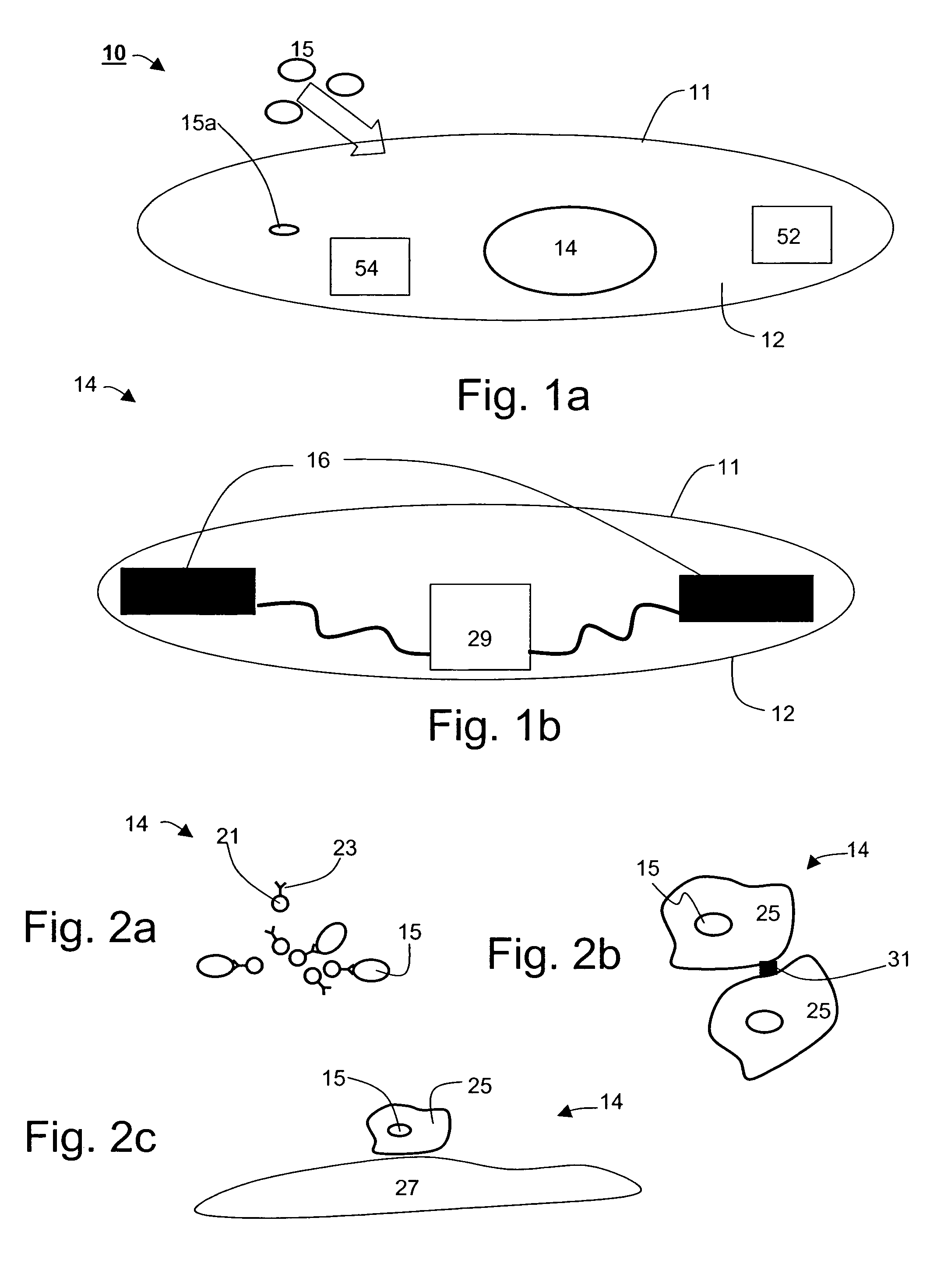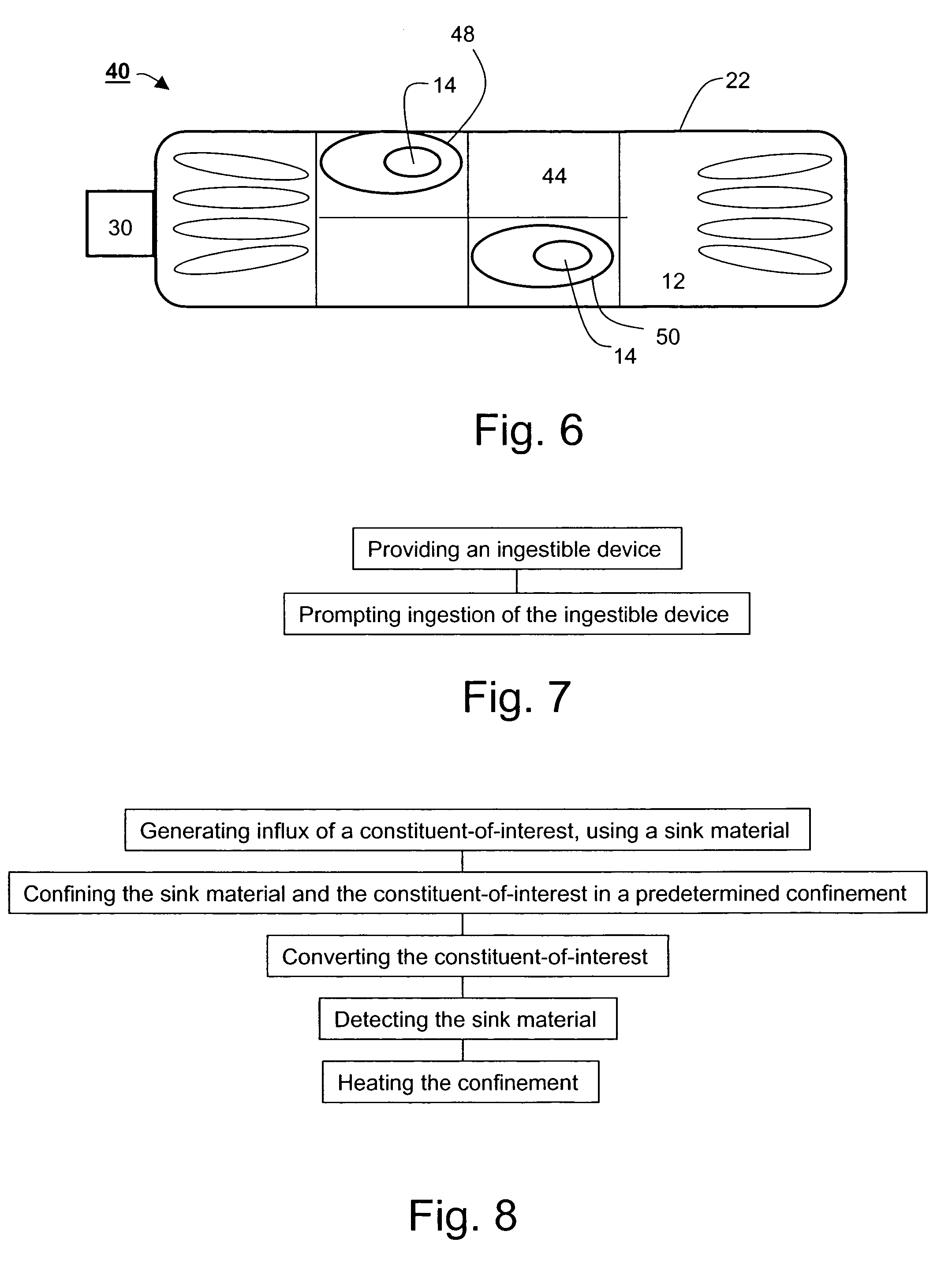Ingestible gastrointestinal device
a gastrointestinal device and a technology for gastrointestinal tract, applied in the field of ingestible devices, can solve the problems of difficult or impossible selection and removal of blood toxins bound, failure to restore the patient to full functional normality and longevity, and difficulty, if not impossible, to resume normal activity, so as to prevent damage to the sink mechanism and prevent damage to the gastrointestinal tra
- Summary
- Abstract
- Description
- Claims
- Application Information
AI Technical Summary
Benefits of technology
Problems solved by technology
Method used
Image
Examples
examples
[0204]Reference is now made to the following examples, which, together with the above descriptions, illustrate the invention in a non limiting fashion.
[0205]The devices and methods, according to preferred embodiments of the present invention operate within the gastrointestinal (GI) and remove undesired highly concentrated intestinal or blood substances or metabolites, and hence such devices would be suitable for treating numerous disorders. The removal of various substances from gastrointestinal fluids using one or more devices provides an alternative to conventional treatments.
[0206]As described hereinabove, effective removal of unwanted GI substances is facilitated by a device-integrated sink mechanism, which is preferably designed capable of specifically removing one or more GI substances.
[0207]Following are several examples of disorders and symptoms that can be treated by the device of the present invention.
[0208]Treatment of Poisoning:
[0209]According to a preferred embodiment o...
PUM
| Property | Measurement | Unit |
|---|---|---|
| diameter | aaaaa | aaaaa |
| diameter | aaaaa | aaaaa |
| diameter | aaaaa | aaaaa |
Abstract
Description
Claims
Application Information
 Login to View More
Login to View More - R&D
- Intellectual Property
- Life Sciences
- Materials
- Tech Scout
- Unparalleled Data Quality
- Higher Quality Content
- 60% Fewer Hallucinations
Browse by: Latest US Patents, China's latest patents, Technical Efficacy Thesaurus, Application Domain, Technology Topic, Popular Technical Reports.
© 2025 PatSnap. All rights reserved.Legal|Privacy policy|Modern Slavery Act Transparency Statement|Sitemap|About US| Contact US: help@patsnap.com



